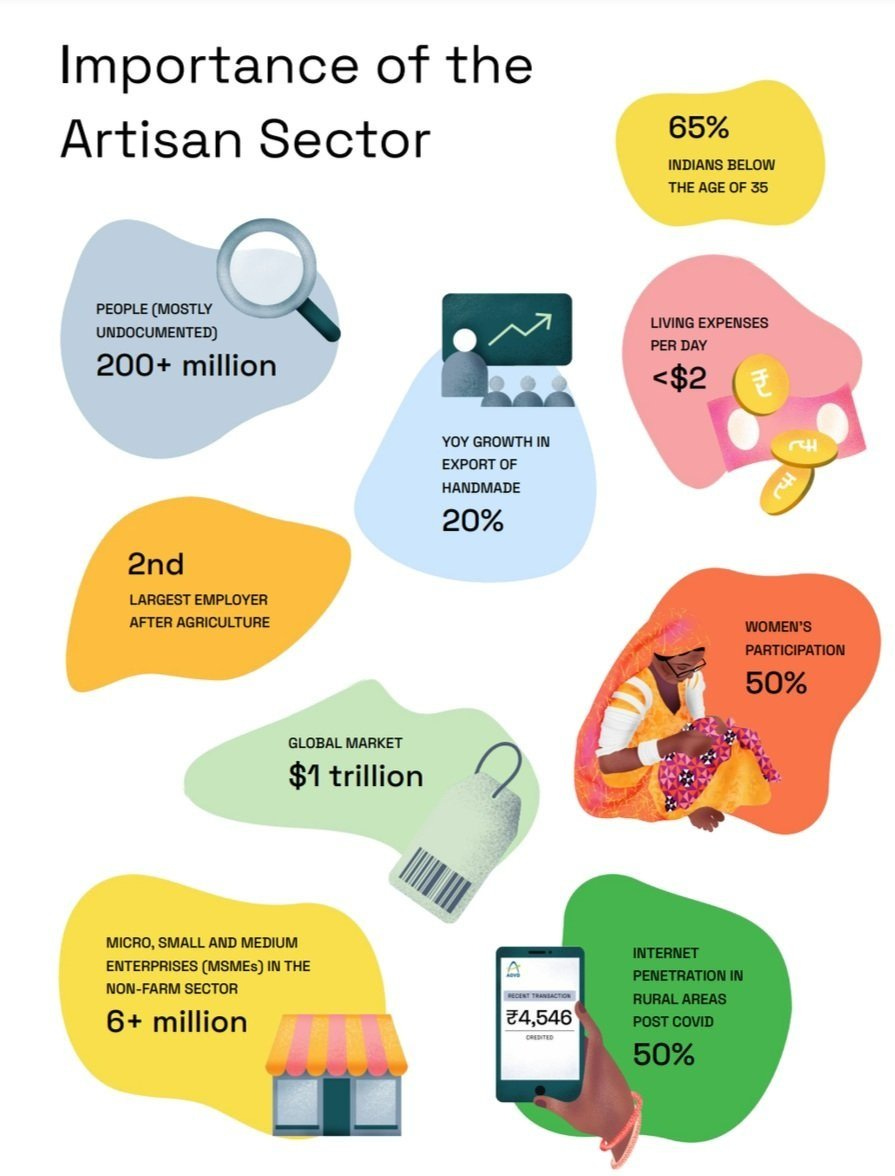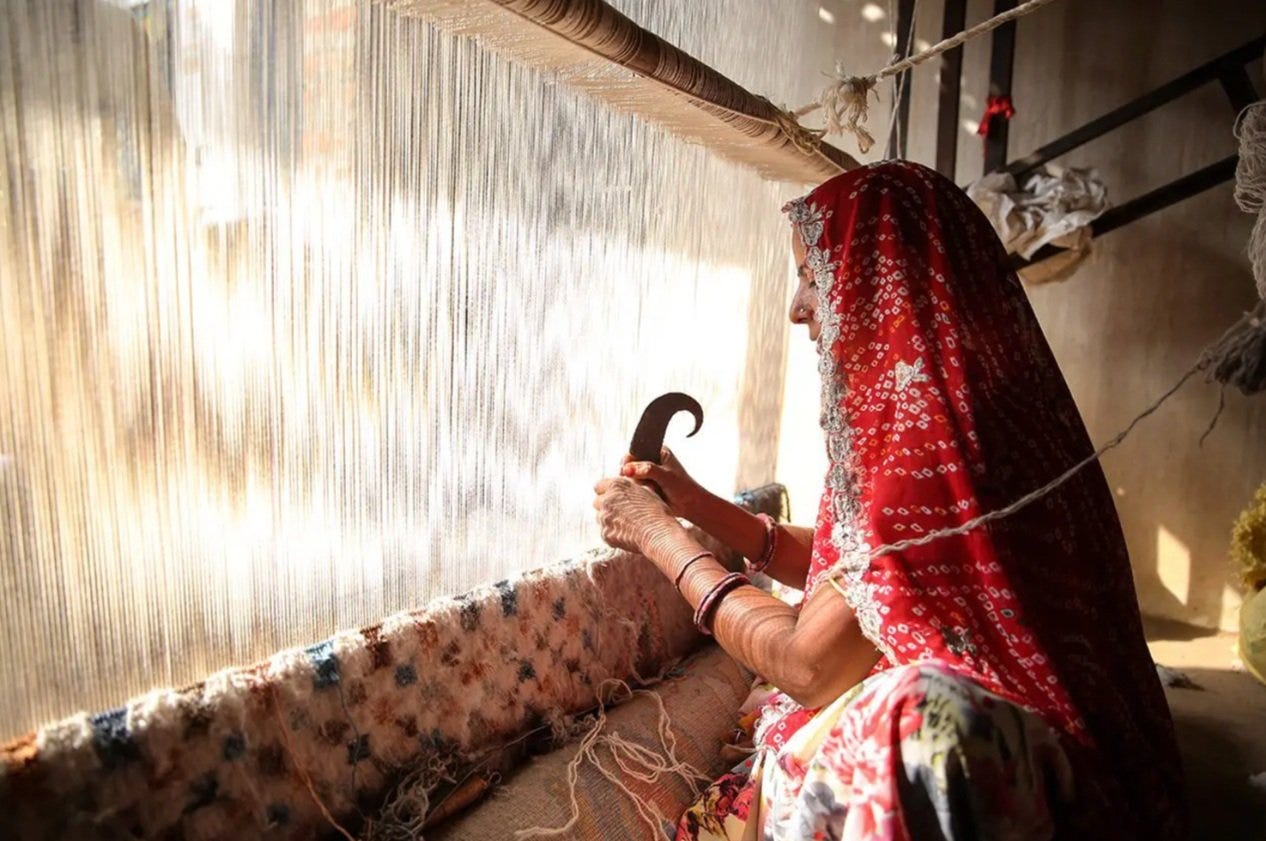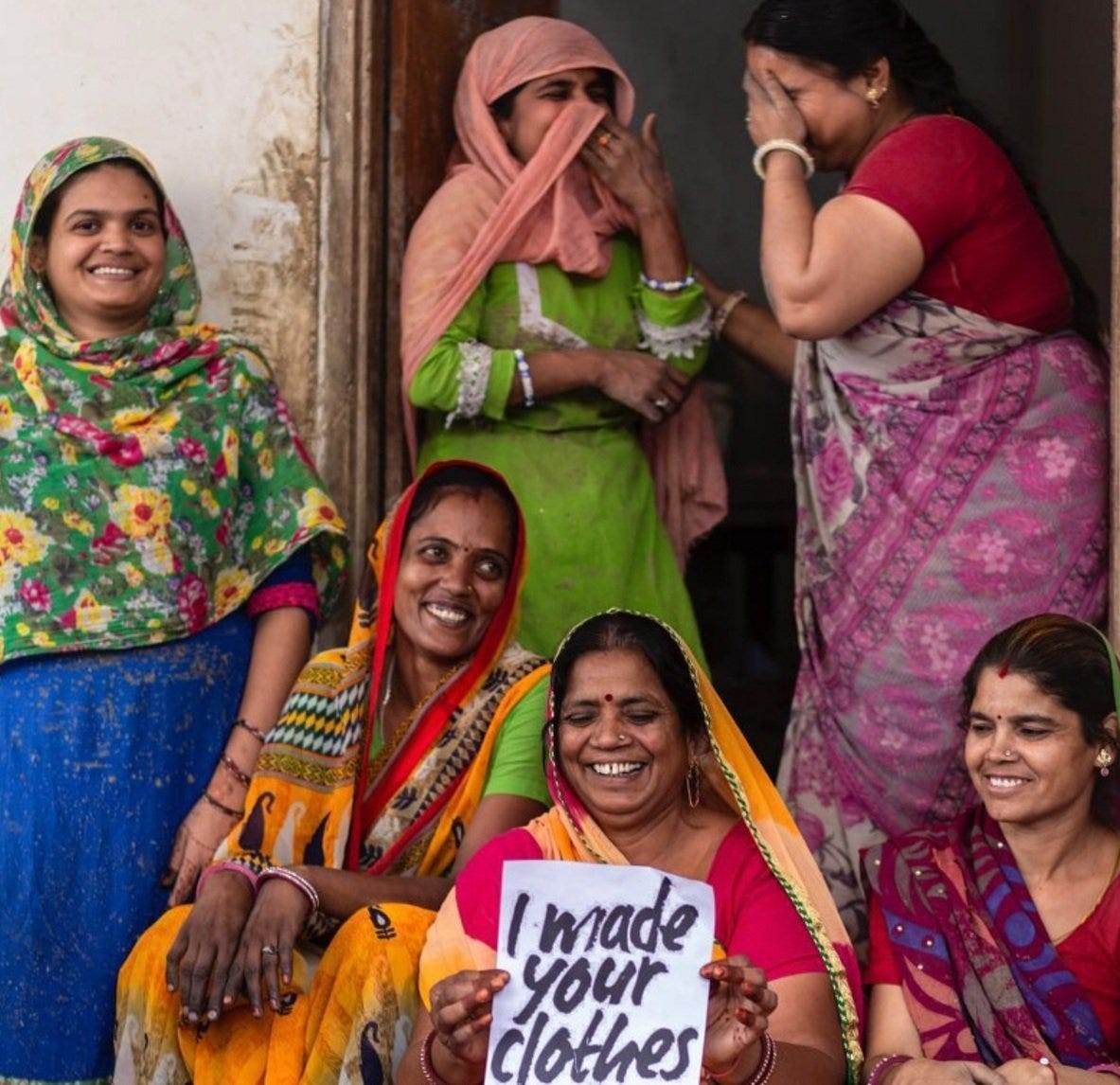The Business of Handmade in India
Written by Shevi Saxena
Karigar in Hindi, (कारीगर) is alternatively transliterated as Kārīgara, refers in English to:—(nm)
an artisan, craftsman; mechanic; tradesman, workman; ~[ri] craftsmanship; workmanship.
This article is based on “Business of Handmade” report by 200 Million artisans published on July 21. You can access the report on http://www.businessofhandmade.com/
A look at the initiatives and impact of 200 Million artisans
The love for arts and crafts in India has been long known since pre-colonial era wherein the Mughals were keenly interested in exporting and promoting the artisanal products. Through agriculture and the artisan sector India dominated the world's economy by 25% of the global industrial output between 1000 AD to 1700 AD.
The journey of handmade business went down drastically in the colonial era when the British brought sanctions and extreme trade policies that single-handedly decimated several crafts. Going through these highs and lows this article intends to get a deeper look at the whole artisanal sector with its impact and challenges.
Where the journey of handmade begins
The business of handmade originates from the artisan community of India. Unlike the mass manufacturing process, handmade products intertwine the daily rituals woven deep into community's social fabric.
There are 3000+ craft traditions spread across the country that date as far back as 2500BC. Be it the home decor, fashion or any accessory can be an artisanal creation interplaying with belief, history, and materialities.
India being one of the youngest countries in the world, its 65% population lives in rural areas.
91% of the country's overall workforce is dedicated to the artisan sector. The sector falls within "informal" and "unorganised" economy even though it is the largest source of employment after agriculture.
The aspect of micro, small, and medium enterprises (MSME's) adapts to the local needs and context making ease of business with the artisans. Out of 5600+ MSME clusters in India, over 3000 of them are craft-based.
The idea of scale is achieved more often than through "formal", as an artisan could be a wage worker, home worker, part time job seeker, or self employed entrepreneur. The growth of small businesses and MSMEs play a pivotal role in bridging gaps for dispersed artisan communities around the country.
With millions of livelihood linked to this sector, half of its count is women specially from the rural communities of India.
20% of all entrepreneurs in the country are women, in which 9/10 of them run micro-enterprises.
81% of informal enterprises are owned by women and are home based usually being less capital intensive.

What are the challenges?
The artisan's journey from raw materials to product and to the consumers gets more complex owing to the unique socio-cultural factors. The lack of infrastructure, leads to supply chain logistics often not serving to rural parts of India, wherein maximum work happens. Due to the lack of interconnected systems in artisan sector, the exposure to consumer tastes, global trends, and market remains limited, this calls for middlemen who limit the artisan's ability to negotiate from the position of strength. The digital marketplace access also counts as a challenge rather than growth for many, as only 21% of the women use mobile internet services despite 63% of them owning mobile phones. The lack of small scale government loans and advances at minimal rates lead to a default reliance on private money lending with interest rates ranging from 18-24%.
Looking to the future: Making the “informal” mainstream
Rebranding
India needs to go beyond the hashtags of #MakeinIndia #VocalforLocal #IncredibleIndia and start its focus on branding and positioning which elevates the value of its "informal" cultural economy. Given the ready massive workforce, the artisan economy should be recognised as a sector/industry. By amplifying the existing contribution to the global luxury manufacturing they can promote this economy to the global go-to hub. The country and its authorities should take a cue from more developed handmade markets of Japan, Italy, UK who have owned, celebrated, and exported their production. There should be prioritisation towards the artisan and an effort to make this business visible.
Tech + Design inclusion to make the system agile
An already existing mobile and internet acess in rural geographies and Tier 2 and Tier 3 towns and villages sets the ground for deeper penetration. The strategy now should be to focus on gen-next and women artisans, especially by building targeted incentive. Similarly, it is important that artisans get national and international market access through communities and D2C startups for selling, and content creators and educators, for leaning purposes. Lastly, it is important to leverage technology for “track and trace solutions” for supply chain transparency, especially when targeting international compliance and supply chains to make handmade products and artisan/MSMEs competitive.
Increase ease of doing business
Policy makers have to reasess the ease of doing business for the informal sector by mandating standard living wages, access to raw materials and tax breaks. This also involves more intra-regional community building as well as policy information to be made available to beneficiaries in local regional langauges. Much like the formal sector, the creative economy sector needs investment fronts like incubators, workshops and knowledge funnels that can help MSME entrepreneurs to be more savvy towards fundraising.
Make capital accessible
Irregularity of cashflow is a big problem in this sector and can be relieved by offering customised loan terms and flexible repayment terms. This means easing restrictions on mandatory collateral and market-rate returns and adopting innovative ways of lending that use alternate data (including end customer transactions) and tech-based approaches.
Handmade & Sustainability
Small is beautiful and sustainable in the world of informality. The artisan sector meets 11 out of 17 sustainable development goals (SDGs), with one of them being low carbon footprint, as these locally made products have lowest carbon footprint of any other major industry. The notion of craft based production is rooted in circular economy as it balances economic, social, cultural, and natural capital. Adopting “Handmade as an Ethos” as an SDG could be huge step towards an intentional and actionable shift that transfers agency, power, and capital to local and indigenous communities, as it represents a slower, pro-people, and pro-nature approach that transcends geographies and definitions.




